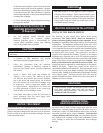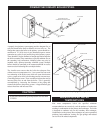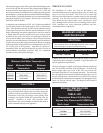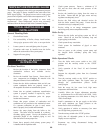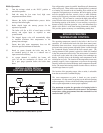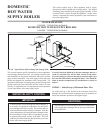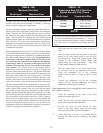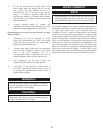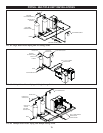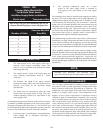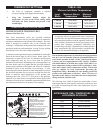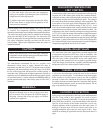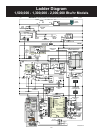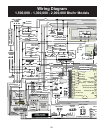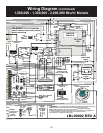
72
5. Be sure the pipes between the water heater or hot
water supply boiler and storage tank are not less
than 3 inch (76.2 mm) diameter for up to 70
equivalent feet (21.2 m) of pipe to and from the
heater. If maximum equivalent length for the
specified pipe diameter is exceeded, larger diameter
pipe may have to be installed to achieve correct flow
and temperature rise.
6. Common manifold piping for multiple unit
installations will require larger minimum pipe sizes
and tank circulating tappings to ensure proper flow.
If the temperature rise is too low, the water velocity is too high.
Adjust as follows:
1. Temperature rise can be increased by slowly
closing the field-installed ball valve in the outlet
piping from the water heater to the storage tank to
achieve the proper temperature rise.
2. Sustained high water velocity and low temperature
rise may result in pitting or erosion of the copper
tubes in the heat exchangers. This is a
non-warrantable failure. Temperature rise must be
properly adjusted to achieve the specified flow rate.
3. Once temperature rise has been prop er ly set,
reconnect the power leads to the bypass actuator.
4. Turn power on and place the run/stop switch in
the “RUN” position and allow the bypass valve to
go through the synchronization process before it
begins normal operation.
WARNINGƽ
Moving the bypass handle while appliance is firing can
result in abnormally high water temperature that may
cause sudden relief valve discharge.
CAUTIONƽ
Temperature rise cannot be adjusted when the burner is
firing at less than 100% of rate input.
WATER CHEMISTRY
NOTE:
Water temperature rise and maximum flow data are based
on heating potable water with a hardness of 5 to 25 grains
per gallon and total dissolved solids not exceeding 350 ppm.
The required temperature rise and the standard integral pump are
sized based on the heating of potable water with a hardness of 5 to
25 grains per gallon and a total dissolved solids not
ex ceed ing 350 ppm. Consult the man u fac tur er when heating
potable water ex ceed ing these specifications. Heating of high
hardness and/or high total dissolved solids water may require a
larger circulating pump, an optional cupro-nickel heat exchanger
and a re vised temperature rise specification based on the water
chemistry of the water to be heated. Water with a hardness of less
than 5 grains per gallon will usually have a low pH which can be
aggressive and corrosive causing non-warrantable damage to the
heater, pump and associated piping. Corrosion due to water
chemistry generally shows up first in the hot water system be cause
heated water increases the rate of corrosive chemical reactions.



